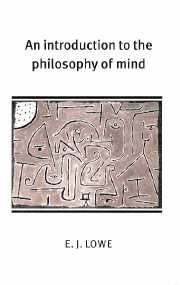Book contents
5 - Sensation and appearance
Published online by Cambridge University Press: 05 June 2012
Summary
In the preceding two chapters, we have had a good deal to say about various kinds of mental state. Although we have focused chiefly on propositional attitude states, such as beliefs, we have also had occasion to mention sensational states, such as pain and nausea. States of the latter sort lack ‘propositional content’. When one feels a pain, one may feel it ‘in’ a certain part of one's body, such as one's left big toe, and consequently have a belief that one's left big toe is hurting. But we must distinguish that belief – which does of course have propositional content – from the pain which gives rise to it, which does not. We do, it is true, say such things as ‘I feel that my left big toe is hurting’, but such a statement is more like the expression of a perceptual judgement than a report that one is experiencing a certain kind of sensation. In the latter kind of report, a term denoting a kind of sensation figures as the direct grammatical object of a verb such as ‘feel’, as in ‘I feel a pain in my left big toe’.
An example of a sentence clearly expressing a perceptual judgement would be ‘I see that the tree is in front of the house’, in which the verb takes a that-clause as its object.
- Type
- Chapter
- Information
- An Introduction to the Philosophy of Mind , pp. 102 - 129Publisher: Cambridge University PressPrint publication year: 2000



